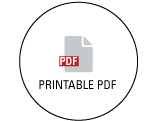M.W. Roomi, Kalinovsky T, Roomi NW, Rath M, Niedzwiecki A
Dr. Rath Research Institute, 1260 Memorex Drive, Santa Clara, CA 95050
Journal of Experimental &Therapeutic Medicine 2014, 7, 1040-1044
Abstract: Adriamycin (ADR), an antineoplastic antibiotic used in cancer therapy, is associated with toxicity to vital organs with long-term use. A nutrient mixture (NM) has previously been shown to exhibit a broad spectrum of therapeutic properties.
The aim of the present study was to determine whether the NM is useful for preventing ADR-induced hepatic and nephric toxicity. Six-week-old male BALB/c mice were divided into four groups of six animals each. Groups A and C were fed a regular diet for three weeks and groups B and D were fed a diet supplemented with 1% NM. After three weeks, the mice in groups C and D received 20 mg/kg body weight ADR intraperitoneally, while those in groups A and B received saline alone. Animals were sacrificed after24 h, blood samples were collected and serum was obtained for clinical chemistry. Organs were also excised and weighed. Administration of ADR to group C (control diet) resulted in a marked increase in hepatic alanine aminotransferase, aspartate aminotransferase and γ-glutamyl transferase levels and renal
blood urea nitrogen, creatinine and uric acid serum markers. However, in group D (NM 1% diet), the serum markers were comparable with the levels of group A and B. Therefore, the
results indicate that NM has the potential to protect against ADR-induced hepatic and nephric damage.
Key Words:
Adriamycin, nutrient mixture, hepatic toxicity, renal toxicity, BALB/c mice, blood urea nitrogen, uric acid, creatinine, alanine aminotransferase, aspartate aminotransferase, γ-glutamyl transferase
Full Study:
